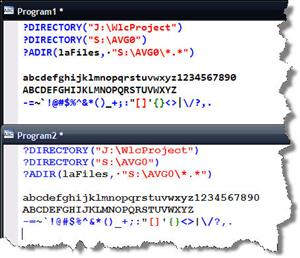I like traditions. I have one with respect to the last day of a conference that has developed over the years. Some may say it came together by accident, but I know better. The tradition is I present during the first session of the last day of the conference. I asked Whil years ago when I started to recognize the “trend” and he confirmed he scheduled me because I don’t drink, and he knew I was reliable to not have a hangover. Smart plan if you are conference organizer.
So I asked Craig today if this was planned and he claims to know nothing of this tradition. So know I have to believe there is some sort of supernatural intervention going on when Whil, Russ, Bob, Mike and Toni, Rainer, Christa, and now Craig put together their schedules. The good thing is I never mind and I have always been amazed when people show up for the session. At this point in the conference you are exhausted, physically, mentally, and maybe even spiritually. I am always appreciative of everyone who hangs out.
Today is packed with seven more grey-matter expanding sessions:
- Rick Schummer – “Using and Extending VFP’s Data Explorer”
- Lisa Slater Nicholls – “Getting the Most Out of Reporting in VFP“
- Alain Legrand – “Using a data driven approach to application customization”
- Doug Hennig – Stonefield Query (during lunch)
- Rick Schummer – “Professional Developer’s Toolkit”
- Lisa Slater Nicholls – “Migrations: Many stops on a tour”
- Doug Hennig – “Best Practices for Vertical Application Development”
I definitely got something out of each session. When I first read the title of Lisa’s second session I thought it was “Migraines”. I think we all have gotten headaches when developing {g}. This session showed how VFP apps can extend 2.6 apps and even do cool interop using XML and other techniques. I was particularly interested in this session because I am doing a lot of 2.6 to VFP migrations.
Alain’s session was very interesting as he talked about his application architecture to localizing his CRM package. It was not traditional localizing though. When you think of localization you normally think of changing strings from one language to another. Alain’s app does do this, but his application often interacts with other systems. Not only does the app change strings, but it goes to the level of changing the names of the fields to be in the native language. Initially I thought this was strange because most presentation of the data is handled with metadata so users won’t care what the columns are named. Alain’s app is accessed externally so the localization of the data elements helps the local software developers who access the structures. Once this was understood the whole thing made perfect sense. The bonus was how cool his app looks and works. Nice job.
There was lots of good discussion in my “Professional Developer Toolkit” session. I actually finished this session early which is the first time this has happened. I really appreciated Andrew Coates‘ participation. He is the local Microsoft evangelist and seemed to throw Team System into the discussion for nearly every category. This shows how wide this product is and how it addresses the various aspects of software development. Great discussion.
The last session of the conference was “Best Practices for Vertical Application Development”. I listened to this session in Milwaukee last year, but again as it happens so often for me, hearing it the second time still reminded me of things important to some projects I have on the horizon.
Craig wrapped up the conference after Doug’s session with some thank yous and really cool speaker gifts. More good news – sounds like there will be another OzFox next February.
This conference was fantastic! I really enjoyed talking with the developers about Fox, the real world problems they face, the real world solutions they are developing, and the successes they are achieving down-under. Craig and the Talman team were very hospitable. My head hurts because of the lack of sleep, but mostly because of the amount of information I digested over the last two and a half days. You have my highest recommendation to attend OzFox 2008.





